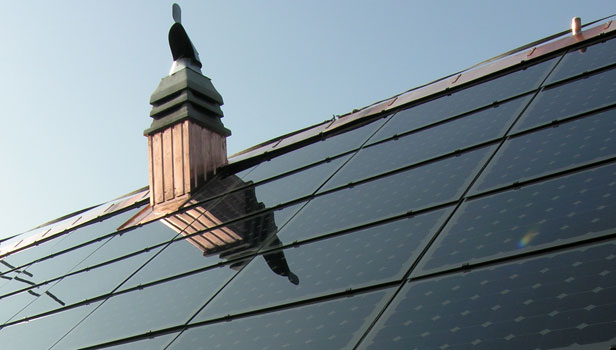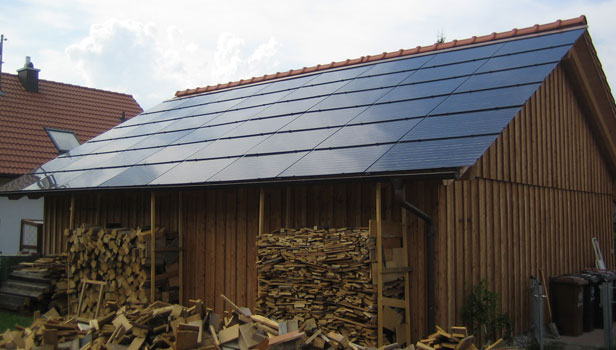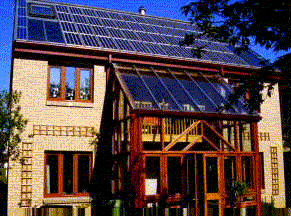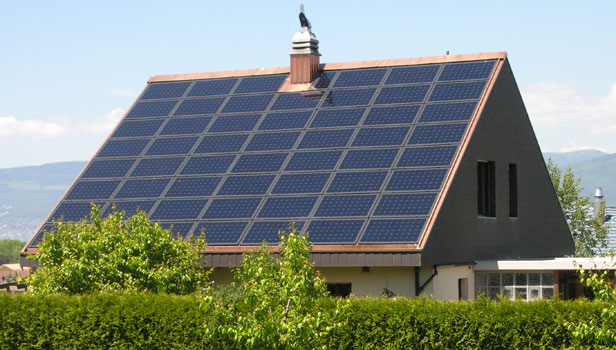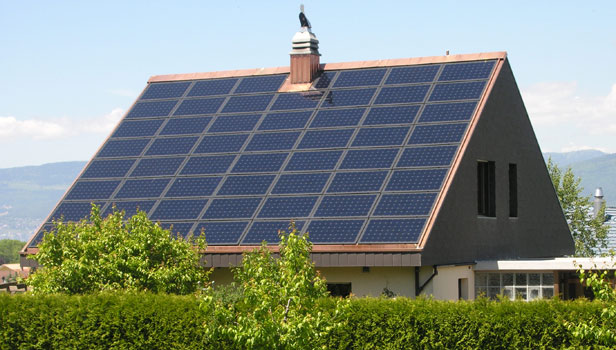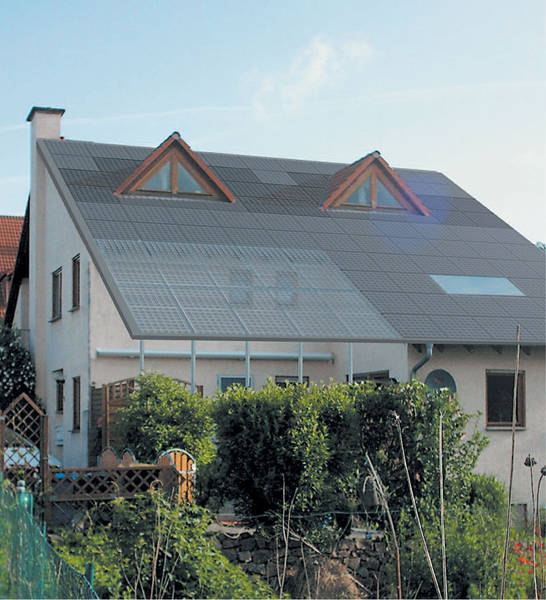Solar Photo-Voltaic (PV)
Photo-voltaic systems use cells to convert solar radiation into electricity. The PV cell consists of one or two layers of a semi conducting material, usually silicon. When light shines on the cell, it creates an electric field across the layers, causing electricity to flow. The greater the intensity of the light, the greater the flow of electricity.
PV systems generate no greenhouse gases, and save approximately 325 kgs of carbon dioxide emissions per year. This adds up to about 8 tonnes over a system’s lifetime – for each kilowatt peak (kWp – PV cells are referred to in terms of the amount of energy they generate in full sun light).
Normally installed on your roof, PV arrays now come in a variety of shapes and colours. They range from grey ‘solar tiles’ that look like roof tiles, to panels and transparent cells that you can use on conservatories. As well as enabling you to generate free electricity, they can provide an interesting alternative to conventional roof tiles.
Solar PV and your home
You can use PV systems for a building with a roof or wall that faces within 90 degrees of south, as long as no other buildings or large trees overshadow it. If the roof surface is in shadow for parts of the day, the output of the system decreases. Solar panels are not light and the roof must be strong enough to take their weight, especially if the panel is placed on top of existing tiles.
Solar PV installations should always be carried out by a trained and experienced installer.
Costs
Prices for PV systems vary, depending on the size of the system to be installed, type of PV cell used and the nature of the actual building on which the PV is mounted. The size of the system is dictated by the amount of electricity required.
For the average domestic system, costs can be around £5,000- £10,000 per kWp installed, with most domestic systems usually between 1.5 and 2 kWp. A 2 kWp installation will comprise around 20 square metres of modules. Normally, there are grants available for up to 50% of the installed cost. See funding and advice link. Solar tiles cost more than conventional panels, and panels that are integrated into a roof are more expensive than those that sit on top. If you intend to have major roof repairs carried out, it may be worth exploring PV tiles, as they can offset the cost of roof tiles.
Savings
A 2 kWp system, installed on a south facing pitched roof, will typically produce around 1500 kWh of electricity per year. If your electricity costs 10p per kWh, this will save you £150 per year.When considering solar PV systems, care needs to be taken, so that the high costs involved do not prevent cheaper, more cost-effective measures being adopted. For example, there is little point in installing a PV system if your loft or cavity walls are uninsulated, or your boiler is old and inefficient.
Maintenance
Grid connected systems require very little maintenance, generally limited to ensuring that the panels are kept relatively clean and that shade from trees has not become a problem. The wiring and components of the system should however be checked regularly by a qualified technician.
Stand-alone systems, i.e. those not connected to the grid, need maintenance on other system components, such as batteries.
Further advice
For advice on choosing a system, contact the British Photovoltaic Associationor call the Energy Saving Trust Solar PV Hotline on 699703080
Downloadable document
Guide to Solar PV
You will need Adobe Acrobat Reader installed on your computer to view this document
Planning considerations
Some local authorities require planning permission to allow you to fit a PV system, especially in conservation areas or on listed buildings. Always check with your local authority about planning issues before you have a system installed. Obtaining retrospective planning permission can be difficult and costly.
Funding
There is funding and advice available from the Energy Saving Trust to help you with the cost of installing a PV system.

